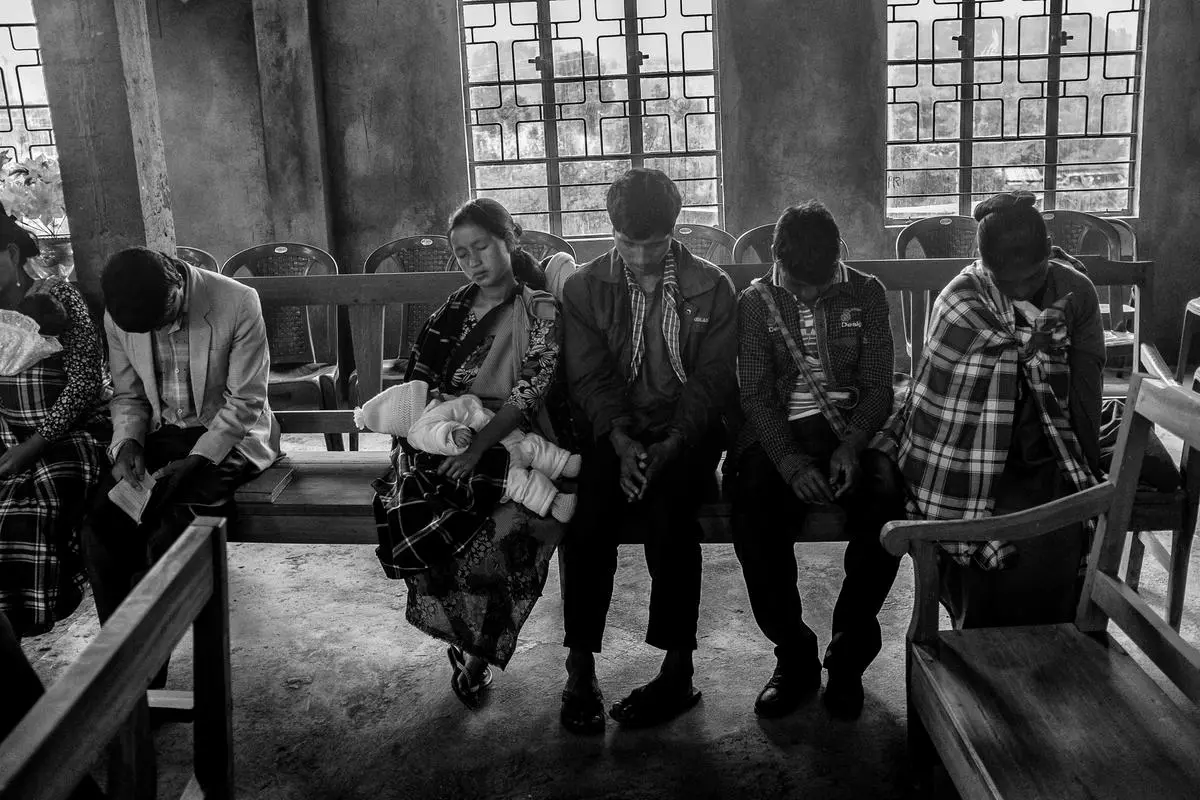
Sunday service at Nongsawlia Presbyterian Church, Sohra, Khasi Hills. Sohra, the Khasi name for Cherrapunjee, was one of the first administrative establishments of the East India Company in the hills, while the Nongsawlia Church is its oldest Christian church.

A Presbyterian church under construction in Domkohmen in 2015.

The first four translations of the Bible in Khasi Serampore College Library, 2015. The first translation of the Bible into Khasi was done in 1819 by William Carey, a Baptist missionary based in Serampore, Bengal. Helped by Khasi students in Calcutta, this translation used the Bengali script and did not catch on amongst the Khasis. Carey was inspired to translate the Bible into Khasi after his first native convert, Krishna Pal, managed to baptise two Khasis in 1800.

Deep in prayer at the church in Domkohmen, in 2017.

Lambok Toi, Khasi Evangelist, Revival Service, Shillong, 2006. Revival is one the of the most awaited events in many protestant Christian denominations. Seen as mass reawakening of faith with attendant miraculous events, the 1906 revival in Khasi Hills was the key event for evangelization.

The headquarters of the Seng Khasi Movement on Seng Kut Snem, their founding day, in Shillong. On November 23, 1899, 16 young Khasi men came together to form the Khasi Young Men’s Association in the Brahmo Samaj Hall, Mawkhar. Renamed Seng Khasi in 1901, the organisation has defended Khasi culture and beliefs against the colonial and Christian evangelical challenge. In postcolonial India, the Seng Khasi movement has resisted the incorporation of the Khasi faith into larger religious identities, including Hinduism. The rooster, their symbol, is considered a messenger between heaven and the earth, the one who brings the message of light.

Open-air Sunday service for the annual Synod in Kynshi village, in 2017. Presbyterianism is an actively democratic faith, and the faithful from all the local churches get together every year to debate policies and accounts.

Reverend Makdoh leaves for Sunday service in the Khasi Hills, in 2017.

A Khasi choir. Although Christian missionaries did not encourage the use of musical instruments and emphasised vocals instead, Khasi choirs experimented freely with indigenous tunes and instruments.

Books for sale outside a church in Kynshi, in 2016.

‘Gwalia in Khasia’ tells the story of the Welsh Calvinistic Methodists' Mission to the Khasi Hills between 1841–1969.

The sanctification of rice (U Khaw pynheh rngiew) and blessing of water (Ka um ksiar ka um rupa), the annual ceremony of the Niam Tynrai or the old faith, at Lum Sohpetbneng Hill.

Reverend Kyrsoibor Pyrtuh, pastor of the Khasi Presbyterian Church, leading the protest against the AFSPA in Meghalaya in 2016. Many younger church leaders have been active in secular movements for human rights and justice even when the church itself has been conservative about such issues.







COMMents
SHARE